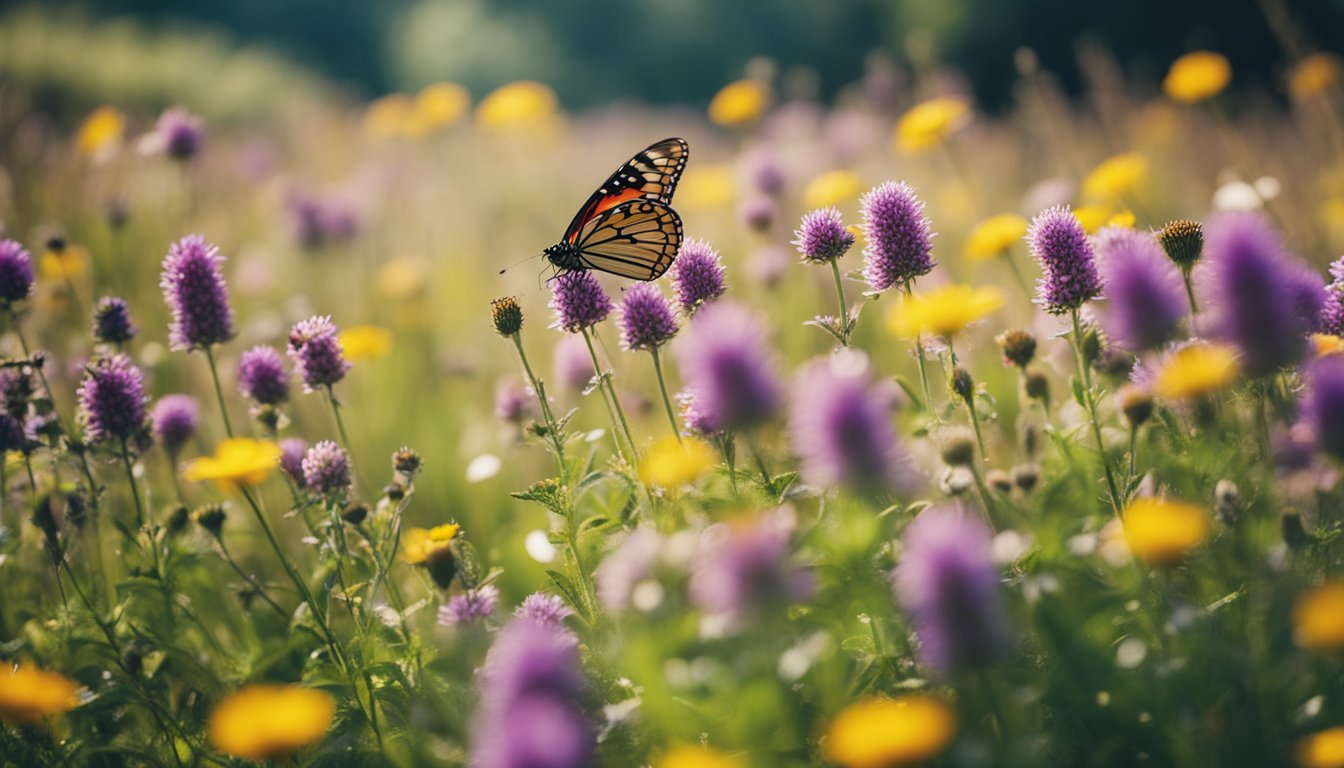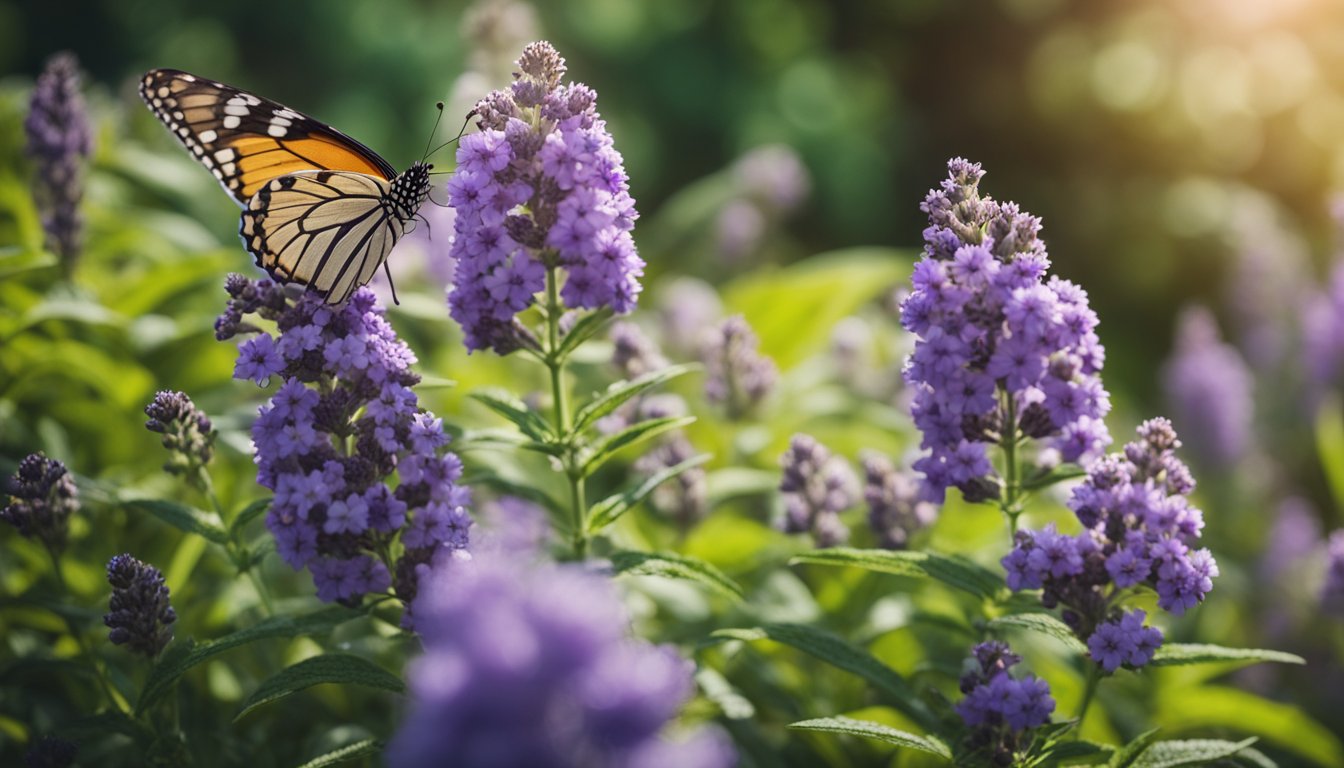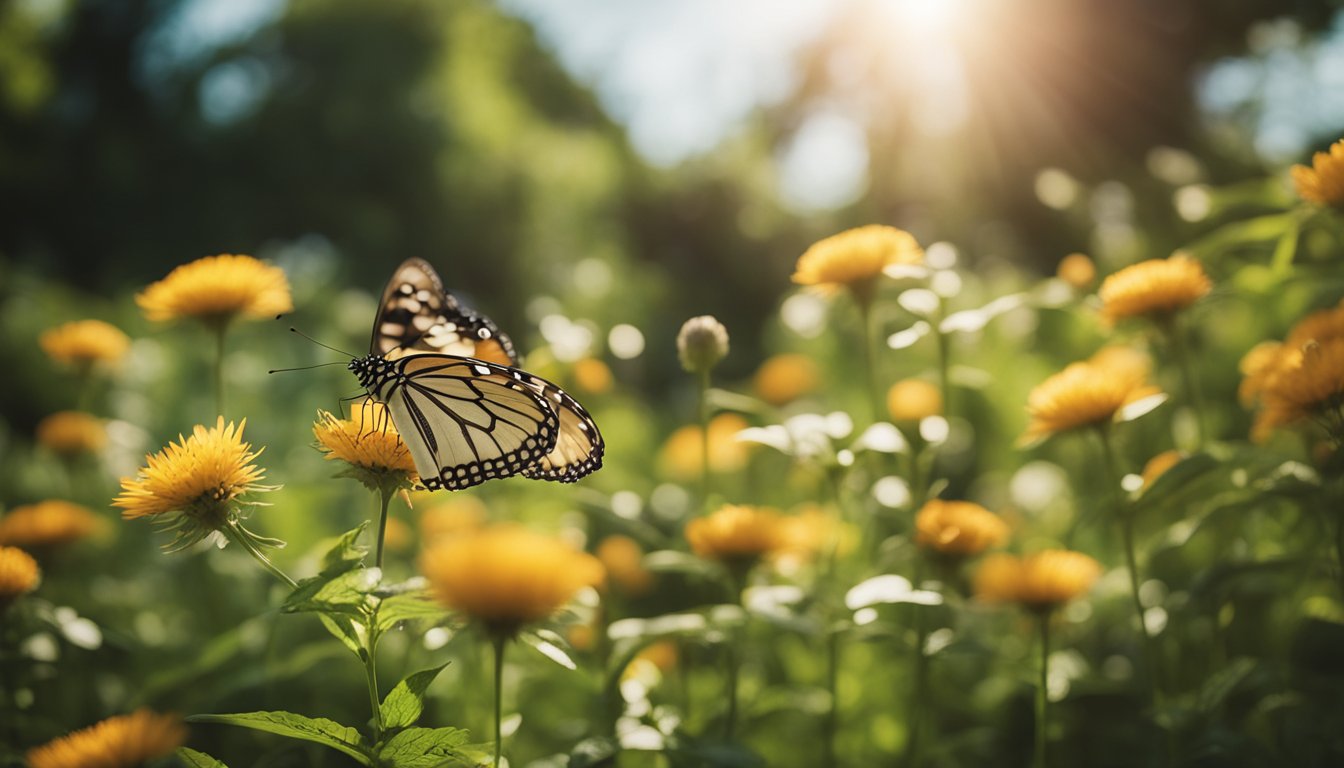Late updated: 09 Aug 2024 11:08
Written by: Emily Thornton
Native UK Plants For Attracting Butterflies: A Guide for Gardeners
If you’re eager to transform your garden into a vibrant haven for butterflies, focusing on native UK plants is the ideal way to start. Native plants offer the perfect nectar sources for various butterfly species while also providing necessary habitats. Choosing the right native plants can significantly increase the number of butterflies visiting your garden.

Lavender and Verbena Bonariensis are excellent additions to a butterfly-friendly garden. Lavender's fragrant spires bloom in the summer, making it an attractive option, while Verbena Bonariensis, with its tall, slender stature and clusters of small, purple flowers, blooms from late summer to autumn. These plants thrive in sheltered, sunny spots, exactly where butterflies love to linger.
Don't overlook the importance of host plants for caterpillars. Nettles and ivy, though often viewed as less attractive, are critical for butterfly larvae. By incorporating a variety of nectar-rich and host plants, we can create a diverse ecosystem that supports the entire lifecycle of butterflies.
Key Takeaways
- Native UK plants are essential for attracting butterflies.
- Include nectar-rich plants like lavender and Verbena Bonariensis.
- Host plants like nettles and ivy support caterpillars' development.
Essential Plants for Butterfly Habitats

Creating a butterfly-friendly garden requires a careful choice of plants that cater to both adult butterflies and their caterpillars. Providing a mix of nectar-rich flowers, suitable host plants for caterpillars, and shrubs for shelter ensures a thriving butterfly habitat.
Best Nectar-Rich Plants for Butterflies
Nectar-rich plants are crucial for butterflies as they provide essential food. Buddleia, often called the "Butterfly Bush", is a well-known favourite, especially in late summer. Lavender, both standard and English varieties, offers abundant nectar and a delightful fragrance.
Verbena bonariensis stands tall and attracts butterflies through its vibrant purple flowers. In spring and autumn, Michaelmas daisies and Ice plants bloom profusely, extending the nectar availability. These species ensure that butterflies have a consistent food source throughout the year, attracting various pollinating insects too.
Caterpillar Host Plants
It’s essential to include plants that caterpillars can feed on, which in turn supports the butterfly lifecycle. Nettles are indispensable, serving several British butterfly species such as the Red Admiral and Peacock.
Hops, often overlooked, are another important host for caterpillars of species like the Comma butterfly. For smaller gardens, Holly and Ivy provide perfect host environments without taking up much space. Including these host plants guarantees that caterpillars thrive, ensuring the future presence of butterflies.
Shrubs to Provide Shelter and Nectar
Shelter is vital for butterflies to roost and find protection. Dense shrubs like Heather and Honeysuckle not only provide secluded spots but also bloom with nectar-rich flowers. Cotoneaster and various types of low-growing Sage serve dual purposes, offering both nectar and shelter.
Oregano and Mint might be better known in the kitchen, but in gardens, they attract butterflies while offering place for them to hide. Ceanothus, or Californian Lilac, provides beautiful blue flowers along with robust shelter. Combining these diverse shrubs ensures our butterfly garden remains a sanctuary throughout the seasons.
Creating a Butterfly-Friendly Environment

To establish a butterfly haven, we should focus on designing our gardens with native plants and ensuring we provide care throughout the year. Here, we'll cover elements to include in your garden and how to maintain these spaces for different seasons.
Designing Your Garden for Butterfly Conservation
Butterflies are attracted to specific plants and garden features. Planting nectar-rich flowers such as lavender, buddleia, and marjoram can draw species like the Common Blue and Peacock.
Open sunlit areas are essential since butterflies love warmth. Ensure there are sunny spots with shelter from the wind. Butterflies such as the Red Admiral enjoy these warm, sunny places.
Incorporating water sources like shallow dishes or puddling stations helps butterflies hydrate. Adding native grasses and wildflowers supports caterpillars, offering them food and shelter during the larval stage.
Avoid using pesticides. Instead, opt for organic gardening practices to protect pollinators and other beneficial insects.
Year-Round Butterfly Plant Care
Providing for butterflies involves planning for all seasons. In spring, plants like primroses and forget-me-not cater to early arrivals such as the Holly Blue.
Summer requires a mix of nectar-rich flowers like lavender and scabious to support peak-season species like the Small Tortoiseshell and Painted Lady. Butterflies feed on nectar, so ensuring a steady supply is crucial.
Autumn plants, including asters and ice plant, provide late-season nourishment. For Meadow Browns and Speckled Woods, it’s key to extend their feeding options as the weather cools.
Over winter, leaving some plants unpruned offers hiding spots and encourages moths, which are also important pollinators. This practice supports butterfly conservation by ensuring their survival through scarce months.
By committing to a butterfly-friendly garden, we not only attract these beautiful insects but also contribute to their preservation.
Frequently Asked Questions
Creating a butterfly-friendly garden with native UK plants involves understanding the floral preferences of local butterfly species and incorporating non-plant elements to support their needs.
What are the best native UK flowers for inviting butterflies into my garden?
Some of the top native flowers include bluebells, primroses, and clover. These flowers provide rich nectar sources and are particularly attractive to butterflies.
How can I create a butterfly-friendly environment in containers and small spaces?
Use compact, nectar-rich plants like marjoram and thyme. Planting in layers with smaller plants in front and larger ones behind can create a diverse habitat even in confined areas.
Which perennial plants indigenous to the UK are known to attract both butterflies and bees?
Lavender, buddleia, and honeysuckle are excellent choices. These perennials not only offer a continuous food source throughout the growing season but also enhance the visual appeal of your garden.
Are there methods to allure butterflies to my garden without relying on floral sources?
Yes, placing overripe fruit such as bananas and oranges in sunny spots can attract butterflies. Another method is to create shallow, water-filled depressions lined with stones for them to drink from.
Can you recommend a variety of plants to include in a dedicated butterfly garden?
A mix of knapweed, cow parsley, and red campion can create a vibrant and butterfly-friendly garden. Including a variety of flowers that bloom at different times ensures there’s always a food source throughout the seasons.
What non-plant items can I introduce to my garden to make it more appealing to butterflies?
Butterflies benefit from sunny basking spots. Flat stones or wooden logs in sunny areas provide ideal places for them to warm up. Additionally, having a mud puddling area rich in minerals can be highly attractive.
